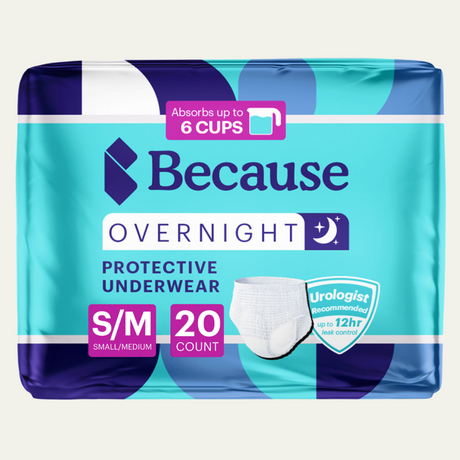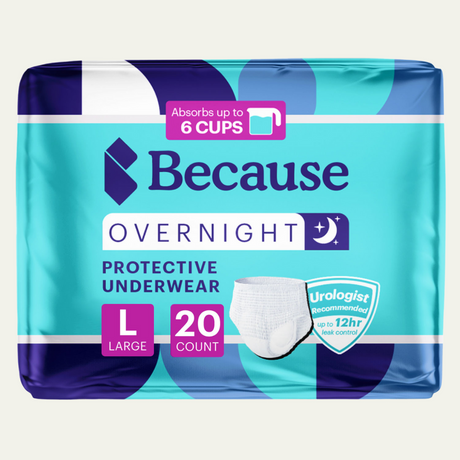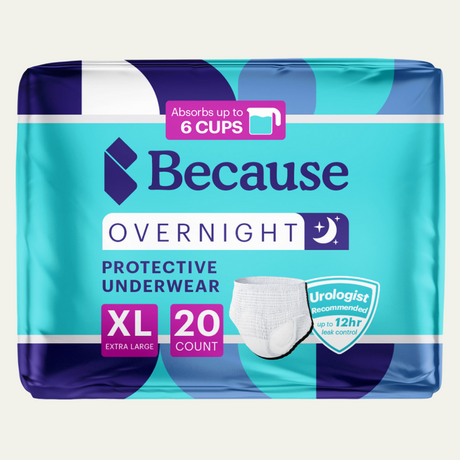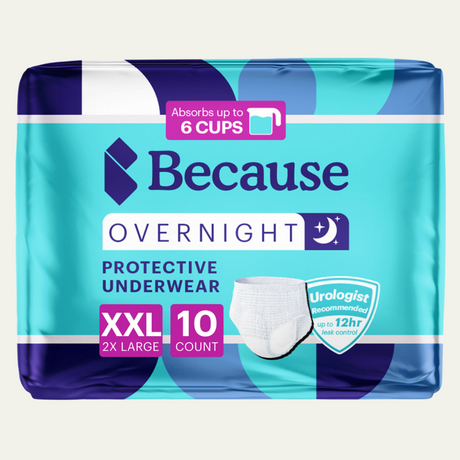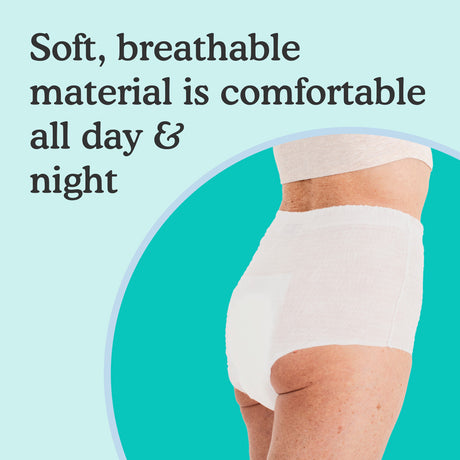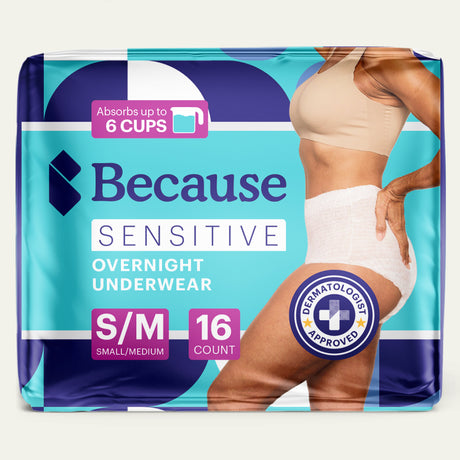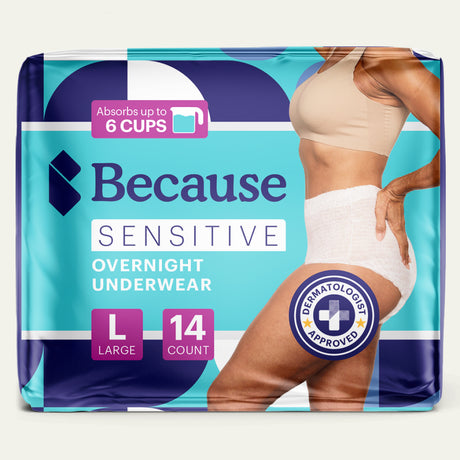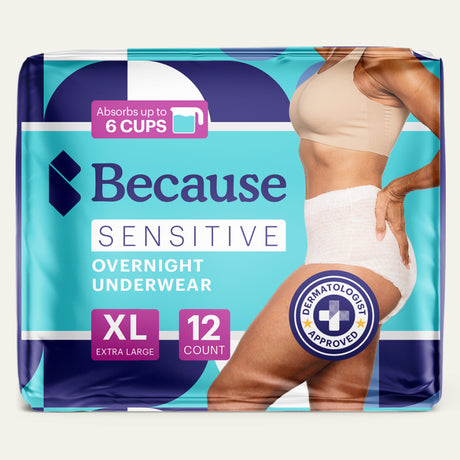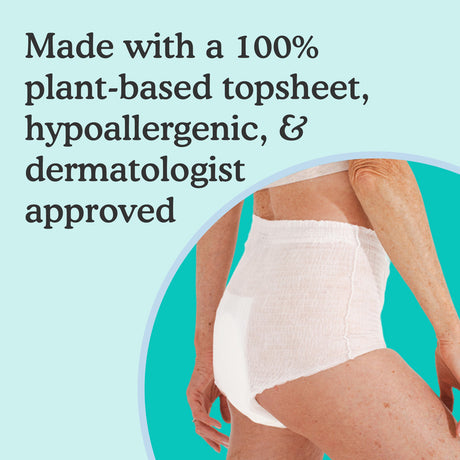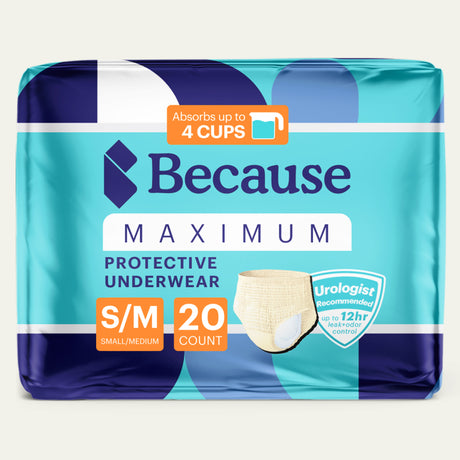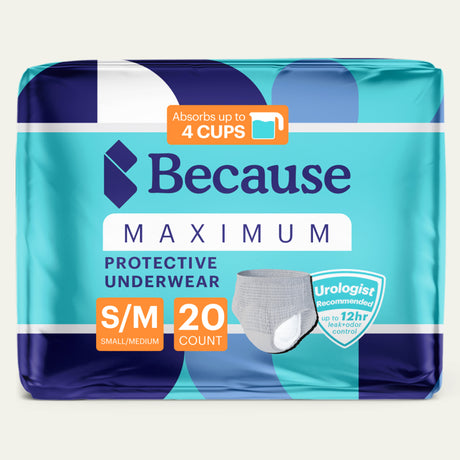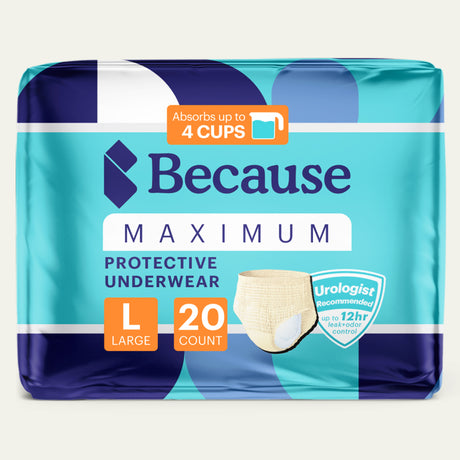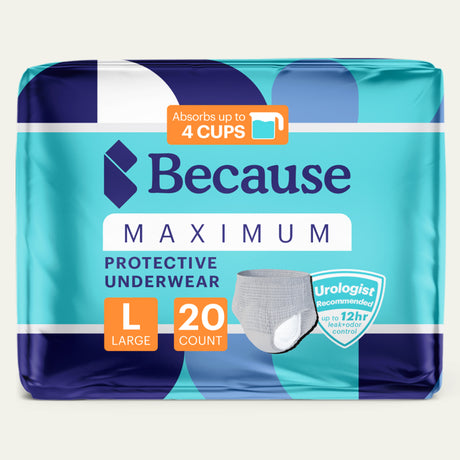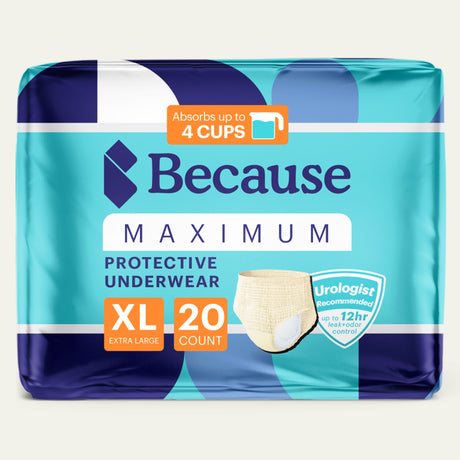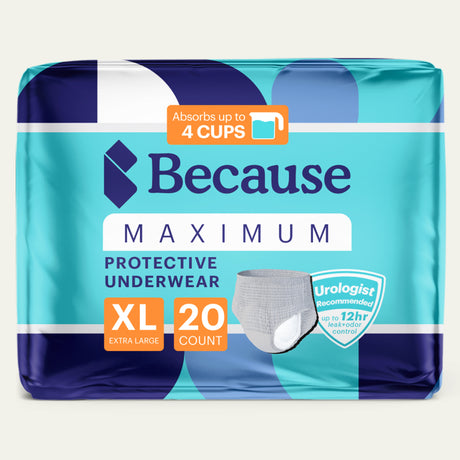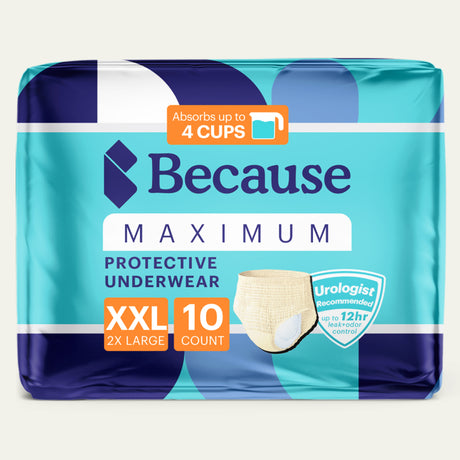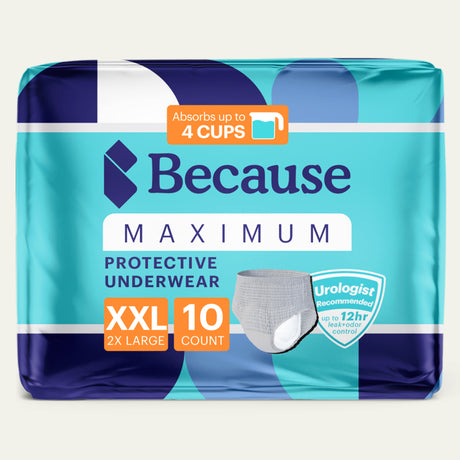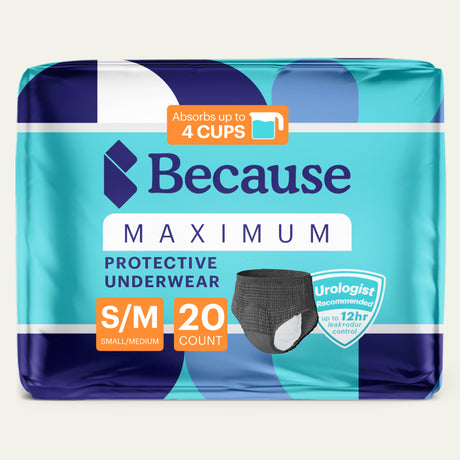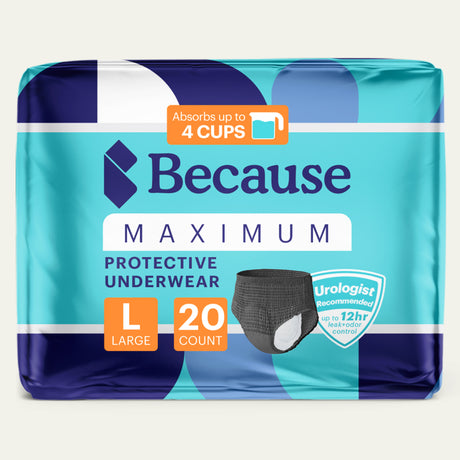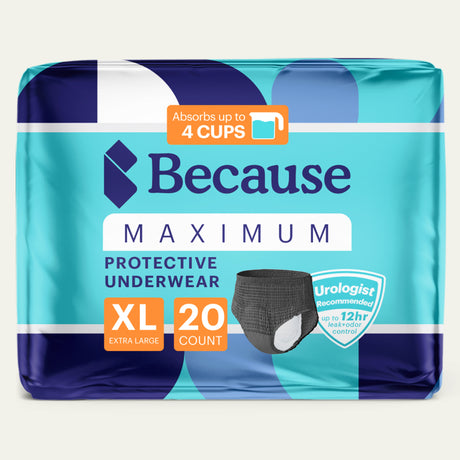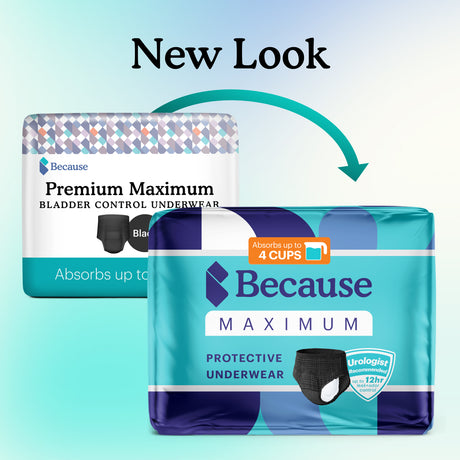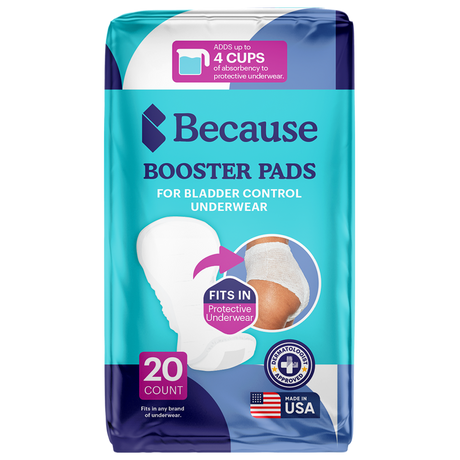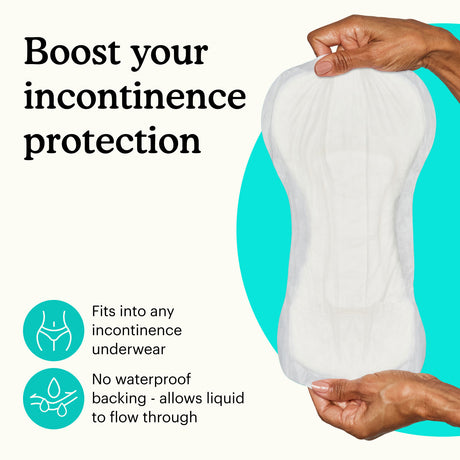Urinary tract infections (UTIs) are among the most common conditions in the U.S. — especially for women. Around 50 to 60 percent of women will develop at least one during their lives, and women aged 65 and older are twice as likely to get a UTI. Many things increase your risk of UTIs, and living with urinary or bowel incontinence is one of them. Read on to find out the answer to the question of “Can incontinent pads cause a UTI?”
Can Wearing Incontinence Pads Cause UTI?

There haven’t been many large scientific studies to determine if incontinence pads cause UTIs. One 2010 study involving 153 older adults in nursing homes found that residents who wore incontinence pads were more likely to get urinary tract infections than those who didn’t. However, the small sample size makes it impossible to account for men and women not living in long-term care facilities.
While these urinary tract infections may have been from incontinence pads, there might be other risk factors. It could be that caregivers weren’t providing enough assistance with personal hygiene or the participants had other conditions linked to UTIs, such as diabetes.
Without more research, we can’t know if incontinence pads directly cause UTIs.
Why Do UTIs Happen?
UTIs can happen when germs enter the urethra — the opening that urine travels through to leave the body. Escherichia coli (E. coli) is the most common bacteria that lead to UTIs. This bacteria is often present in fecal matter, and traces of it may linger on the skin around the anus.
If bacteria from the rectal area travel into the urethra, the body tries to fight off the germs. The immune system becomes activated and releases chemicals that cause inflammation. In some cases, the immune response may be enough to eliminate the bacteria. Infection occurs when the immune system is overwhelmed, leading to increased urinary frequency and pain when urinating.
How Are Incontinence Pads and UTIs Connected?
Although we can’t say for sure that incontinence pads cause UTIs, different factors may be linked. Read on to learn more about correlations between incontinence pads and UTIs.
Irritation Risk
Anything that leads to swelling and irritation in the private area can make UTIs more likely to occur. If the skin around the urethra becomes inflamed, there’s a greater chance E. coli bacteria or another type of bacteria will make itself at home there. This means skin irritation caused by allergic reactions like contact dermatitis from soaps, laundry detergents, or poor-fitting underwear can make people more likely to get UTIs.
Both incontinence and maxi pads could potentially irritate the skin. If a pad doesn’t fit securely, it might rub when you move and cause chafing. Also, thick pads pressing against the private area could produce friction, leaving skin inflamed.
Increased Moisture
Bacteria thrive in moist environments. That’s why your doctor might recommend breathable cotton underwear over synthetic fabrics if you’re prone to UTIs.
Absorbent products could encourage the growth of bacteria when damp. Not changing incontinence and menstrual pads often enough can allow moist conditions to persist, increasing the risk of bacterial infection.
Plus, all incontinence products have maximum absorbency levels. Once they reach their limit, they become oversaturated, and urinary leaks can occur. These conditions could lead to damp undergarments and a greater risk of UTIs.
Poor Hygiene
Elderly patients with urinary incontinence may be more likely to get UTIs when wearing absorbent pads. Failing to clean the genital area when changing pads or wiping from back to front when cleaning could provide opportunities for bacteria to enter the lower urinary tract. Even germs lingering on unwashed hands might lead to an infection.
How Often Should Incontinence Pads Be Changed?

Even if you don’t experience leaks or an accident, it’s a good idea to change your incontinence pads or adult diapers every six to eight hours. If you’re caring for a loved one who has trouble communicating, check every two to three hours to see if their incontinence pads need to be changed.
Is It Bad to Wear Incontinence Pads 24/7?
Generally, it’s not a good idea to wear the same incontinence pad for 24 hours — especially if you get frequent UTIs. The same is true for panty liners and menstrual pads. Changing clean incontinence pads a few times a day keeps your skin drier.
There’s no evidence that it’s harmful to wear incontinence pads all day, as long as you change your protection occasionally and practice good personal hygiene.
How to Prevent UTIs When Wearing Incontinence Pads

While it may not be possible to prevent urinary tract infections completely, there are some things you can do to reduce your risk. Here are a few UTI prevention tips to try.
Change Your Incontinence Protection Regularly
Changing your incontinence protection periodically, even if it’s dry, can help keep your skin healthier. Regularly changing your pads can also help with another common problem: unpleasant odors due to incontinence.
Choose the Right Pads
When shopping for hygiene products, choose pads with the right level of absorbency for your needs. Because Market offers three absorbency options: moderate pads that hold 1 cup of liquid, maximum pads that hold 2 cups of liquid, and women's overnight pads that hold 3 cups of liquid. Wearing pads absorbent enough for your incontinence issue will keep you drier throughout the day.
Wear pads developed specifically for incontinence. While they don’t appear that different in concept, maxi pads and menstrual pads can’t draw fluid away from the skin as incontinence pads do. Fit also matters; look for pads with a bulk-free fit that stays in place when you move.
Stay Hydrated
Urine is how bacteria get flushed out of your urinary tract, and not drinking enough fluids leads to a decrease in urination. You should talk to your healthcare provider about how much water you should drink to maintain urinary health.
Go to the Bathroom When You Need To
Trying to hold your urine so that you don’t wet your incontinence pad isn’t a good idea. Waiting a long time to urinate when you have the urge to go promotes bacterial growth. It can also lead to stretching of the bladder, which could worsen incontinence symptoms — especially if your pelvic floor muscles are weak.
Don’t ignore the feeling of a full bladder. If you need to go and can’t reach the bathroom, rely on your incontinence protection and change your pad as soon as possible.
Adopt Good Hygiene Practices
Follow these simple steps when changing your incontinence pads:
- Wash your hands for at least 20 seconds using warm water and soap.
- Remove your incontinence pad and place it in a disposal bag.
- Cleanse your skin with a no-rinse cleansing spray or cleansing wipes.
- Use a front-to-back motion when cleaning your private parts. This habit can help prevent fecal matter from infecting your urethra.
- Allow your skin to air dry, or pat it dry with a soft towel.
- Apply a barrier cream to protect your skin from moisture.
- Put on a fresh incontinence pad.
Read more about proper disposal of incontinence products.
Take Care of Your Skin
Incontinence skin care can help reduce the risk of UTIs by keeping your genital area healthy. Inflammation and irritation can make you more vulnerable to bacteria, but barrier creams and wipes protect your skin from moisture, making it less likely to become irritated. If you do develop incontinence-related irritation, use a soothing cream to support the healing process.
Try a Supplement
A urinary health supplement supports urinary health over time. Because UTI Health Supplement contains cranberry juice powder, d-mannose, hibiscus, and dandelion extract, which work together to bolster the natural defenses in your urinary tract.
Talk to Your Medical Provider
If recurrent urinary tract infections persist, talk to your doctor. Other issues like estrogen deficiency and chronic medical conditions can increase the risk of UTIs. Seek medical help to identify an underlying problem contributing to the problem. Your doctor can determine if treatments for urinary incontinence could help reduce symptoms.
Does your loved one struggle with incontinence? Get a free sample pack to try!
Source:
PubMed Central. (2010). Use of Absorbent Products and the Risk of Developing Urinary Tract Infections in a Community-Based Sample of Older Adults. https://pubmed.ncbi.nlm.nih.gov/20631404/#:~:text=Conclusion%3A%20the%20use%20of%20absorbent,increased%20risk%20of%20developing%20UTIs


